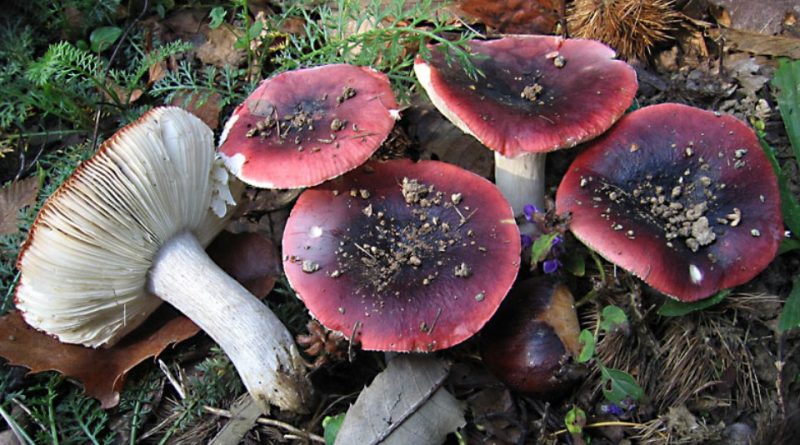Russula atropurpurea
Russula atropurpurea
The Russula atropurpurea (Russula atropurpurea (Krombh.) Britzelm.) Is a basidiomycete fungus of the Russulaceae family.
Systematics –
From the systematic point of view it belongs to the Eukaryota Domain, Fungi Kingdom, Phylum Basidiomycota, Class Basidiomycetes, Russulales Order, Russulaceae Family and therefore to the Genus Russula and to the Species R. atro purpurea.
The terms are synonymous: Russula krombholzii Shaff., Agaricus atropurpureus Krombh., Russula undulata Velen., Russula depallens var. atropurpurea (Krombh.) Melzer and Zvára, Russula atropurpurea var. krombholzii Singer.
Etymology –
The term Russula is the diminutive of red rússa: red. The specific epithet atro purpurea comes from ater, dark and purpureus, purple; therefore of dark purple color.
Geographical Distribution and Habitat –
The Russula atropurpurea grows in mixed woods, on the edge of paths. In Italy it bears fruit from the end of June until late autumn. It is a fungus present in many areas of the planet; especially in the countries of continental Europe, including Great Britain and Ireland, and in other parts of the world, including Asia and North America.
Recognition –
It is recognizable by the 8-12 cm diameter hat, from semi-convex to flat, slightly depressed in the center, not very fleshy, with a brilliant cuticle, of an intense purplish red color, purple, darker in the center, with a curved, not striated edge .
The gills are white or pale straw yellow, dense, thin, adnate. The stem is 5-6 x 1–2 cm, white in color.
The flesh is white, compact, with gray nuances in the stem, with a fruity odor.
At the microscope, white spheres are observed in mass, subspherical, cross-linked with warts, 7-9 x 6-7 µm. The cystidia are appendiculate, of 100 x 8-12 µm. The slightly clavicated pileocystids, often appendicated or capitate, of 100 x 6-10 µm.
Cultivation –
The Russula atropurpurea is not a cultivated mushroom.
Uses and Traditions –
The Russula atropurpurea is a fairly large and very common mushroom; it can be confused with Russula fragilis, which is quite variable in color and has characteristics similar to Russula atropurpurea, although it is much smaller, more fragile and its gills have finely toothed edges.
Another possible confusion can be made with the Russula xerampelina, the Russula del Granchio, which has a red stem and smells like fish; with the edible Russula cyanoxantha; with the edible Russula amoena and the edible Russula xerampelina.
Russula atropurpurea is an edible mushroom.
Preparation Mode –
This russula, even if edible, is recommended to cook it thoroughly. It is always a good recommendation because the Russulas are in certain cases difficult to identify accurately and a small number of species of this genus are poisonous mushrooms; for this reason it is very important to collect only those specimens that can be identified at species level with complete certainty. In cases of uncertainty it is always best to avoid collection and preparation in the kitchen.
Guido Bissanti
Sources
– Wikipedia, the free encyclopedia.– Cetto B., 2008. The mushrooms from life, Saturnia, Trento.– Pignatti S., 1982. Flora of Italy, Edagricole, Bologna.– Conti F., Abbate G., Alessandrini A., Blasi C. (ed.), 2005. An annotated checklist of the Italian vascular flora, Palombi Editore.
Attention: Pharmaceutical applications and food uses are indicated for informational purposes only, do not in any way represent a medical prescription; therefore no liability is accepted for their use for curative, aesthetic or food purposes.


